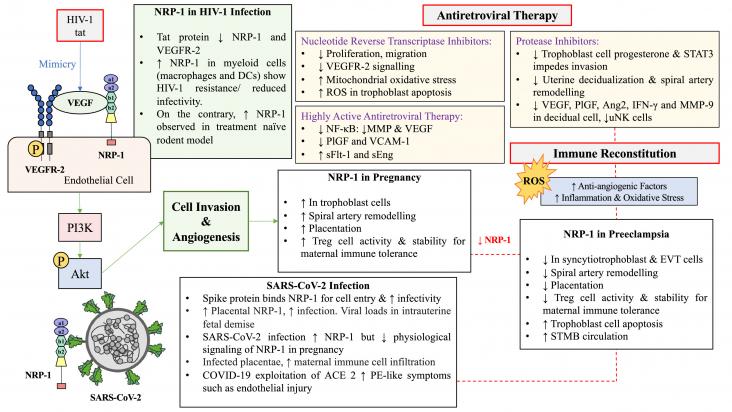Recommends ways to maximise potential of autonomous vehicles to improve accessibility for disabled persons.

This review explores the role of transmembrane neuropilin-1 (NRP-1) in pregnancy, preeclampsia (PE), human immunodeficiency virus type 1 (HIV-1) and severe acute respiratory syndrome coronavirus 2 (SARS-CoV-2) infections. Since these conditions are assessed independently, this review attempts to predict their comorbid clinical manifestations.
Food insecurity, defined as insufficient access to nutritious foods, is a social determinant of health that may underpin health disparities in the US. American Indian and Alaska Native (AI/AN) individuals experience many health inequities that may be related to food insecurity, but no systematic analyses of the existing evidence have been published. Thus, the objective of this scoping review was to assess the literature on food insecurity among AI/AN individuals and communities, with a focus on the prevalence of food insecurity and its relations to sociodemographic, nutrition, and health characteristics. Based on the review, recommendations for future research were derived, which include fundamental validity testing, better representation of AI/AN individuals in federal or local food security reports, and consideration of cultural contexts when selecting methodological approaches. Advances in AI/AN food insecurity research could yield tangible benefits to ongoing initiatives aimed at increasing access to traditional foods, improving food environments on reservations and homelands, and supporting food sovereignty.
This chapter advances Goals 7, 16, and 10 by exploring the tensions between democracy and procedural justice across two diverse case studies from Canada (wind energy) and the United States (oil and gas). The authors identify a common scalar mismatch between the interests and power of those exercising democracy at provincial/state levels and those living locally and impacted by development—straining to have their voices heard.
This Article supports SDGs 5, 8, and 10 by investigating the prevalence of workplace sexual harassment and violence by demographic factors and work sectors among Icelandic women, providing nuanced targets for prevention and for public policies aimed at promoting women’s safety in the work environment.
This article aligns with the SDG goal 3 of Good health and wellbeing, SDG 10 Reduced inequalities, and SDG 12 Responsible consumption and production by proposing Choosing wisely recommendations to help general practitioners adopt a more rational and cost-effective approach to treating patients with viral hepatitis in Brazil and Latin America.
Elsevier,
The COVID-19 Response
The Vital Role of the Public Health Professional
2023, Pages 101-118
This content aligns with Goal 3: Good Health and Wellbeing as well as Goal 10: Reducing Inequalities by examining the consequences of failing to adequately address long-standing social determinants and structural disparities related to the public's health
This content aligns with Goal 10: Reduced Inequalities by exploring how social factors such as access to housing, employment, education, and healthcare contributed to the inequitable impacts of COVID-19.
This Editorial sharing the experiences of a Radiology Department-led Racial and Socal Justice Book Club supports SDGs 10 and 8 by describing the ways they made an intentional effort to normalize discussions about racial and social (in)justice and examine everything through an anti-racist lens.
This chapter advances the UN SDG goals 7, 10, and 16 by suggesting that energy does not only need to be democratized but ultimately, needs to be decolonized from the processes that place fossil fuels in the service of settler capitalism, rather than Diné sovereignty. Such a move might enable movements toward energy justice.
